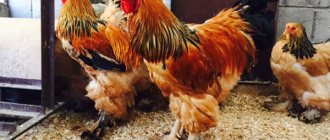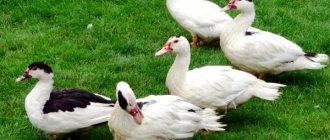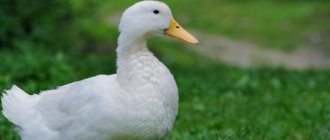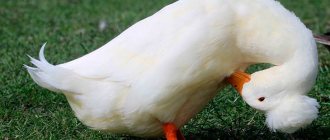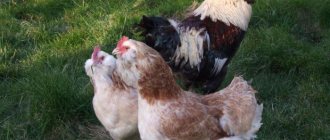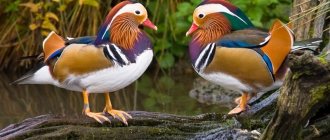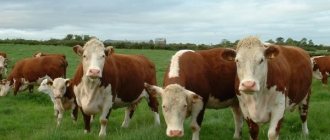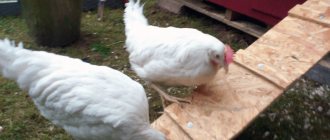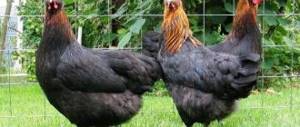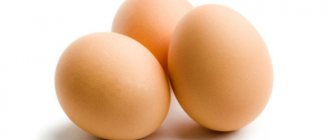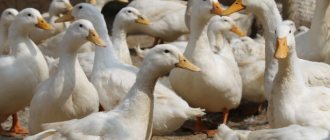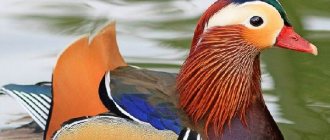History of the breed
The blue favorite, oddly enough, was developed completely by accident. At the poultry farm in the Blagovarsky district of Bashkortostan in 1998, specialists worked to create a highly productive hybrid based on the Peking duck. During the selection process, they obtained an intermediate cross, characterized by simply excellent productivity indicators. This blue duck impressed the breeders so much that they decided to register it as a separate hybrid. Today, favorites, or, as they are popularly called, pharaohs, are successfully bred both in homestead farms and in large poultry farms.
Feeding
After hatching, the chick initially feeds only on boiled eggs. After two weeks, you can include boiled vegetables, herbs, potatoes and carrots in your diet. After the first month, the young animals can be given grain mixtures.
Important! If the chicks were not bred independently, but were bought from hand, after purchase they need to be given a weak solution of potassium permanganate to drink. This will help cleanse the body of existing infection and avoid the death of the chicks.
Since cross breeds are a highly productive species and are most often raised for meat, the diet should consist primarily of protein foods. It is customary to feed adult individuals with ready-made feed mixtures; they grow quickly from them.
Interesting! In addition to the main food, vegetables should be included in the diet of birds as additional sources of vitamins.
Ducks can be given any vegetables, either boiled or raw. The exception is raw beets. It is given only to adult ducks and only boiled.
What foods can be given to ducks:
- Roots;
- Boiled vegetables;
- Cottage cheese;
- Milk.
Also, do not forget about feed additives. On the territory of the poultry house, where birds usually walk, you should scatter egg shells, limestone or shells. Feed additives are necessary for birds at any age. They improve digestion and fill the body with minerals.
Reference! According to the monthly weight table, by 2 months the duck should weigh between 2.7-3.6 kg.
Adults should be fed at the same time 2 or 3 times a day. It is best to give grain in the evening before bed.
general description
As can already be judged by the name of the hybrid, the plumage color of this duck is in most cases blue-gray. Individuals of this breed look truly impressive. Their body is very powerful and massive, and their legs are short and strong. The beak of this hybrid is usually gray.
Despite the fact that Blue Favorite ducks are not a breed, but crosses, in some cases they can be bred “inside”. The offspring bred in this way practically do not lose good productivity indicators. However, the feather color of ducklings obtained through natural breeding of favorites can vary significantly. Cream, white-breasted and simply white individuals appear in the herd.
Actually, the plumage of these ducks itself is very thick. Therefore, in summer they can be kept simply in an enclosure under a canopy, and in winter - in an unheated barn.
Breeding Blue Favorite ducks
Raising ducklings is the most difficult part of breeding birds of this breed. Firstly, not all eggs are fertilized, which results in fewer chicks than intended. An unfertilized egg can be used for food, but naturally it is no longer suitable for breeding young animals.
The second problem is the lack of maternal instinct in queens of this breed. They do not strive to hatch the clutch and most often abandon it. And also, according to reviews from the owners, ducks of the Favorite breed are not very good at raising offspring. But all these problems are solvable, and there are several options for how to deal with them.
Obtaining ducklings of the blue Favorite breed
To produce young of these poultry, hatching in an incubator or hatching eggs by other birds is used. Eggs are often placed under chickens or turkeys, and those hens are chosen that have already proven themselves well. You can also place an egg in the clutch of a duck of another breed, or place it on a ready-made clutch consisting entirely of Favorite eggs. For example, an Indian duck or another bird with a developed brooding instinct is suitable as a hen. But the hen should be provided with suitable living conditions and proper care. At the same time, you need to understand that, for example, the same number of eggs will not fit under a chicken as under a duck or turkey. It is better to transfer the excess egg under another queen.
https://youtube.com/watch?v=VIDEO_ID
If the bird begins to lay eggs, and there are no other candidates for hen, then you will have to use an incubator. It should be remembered that even in the best industrial units, the hatching egg does not always develop as expected. There is always a percentage of losses, which usually ranges from 15% to 35% of the entire masonry. And this does not always depend on whether it is a homemade incubator or an industrial device. Not the least role is played by the hens themselves, their feeding and living conditions.
The eggs in the incubator should be constantly monitored and housing for the ducklings should be prepared in advance. Under natural conditions, incubation in ducks lasts about a month, but artificial incubation may take less time. It all depends on the design of the incubator and the selected eggs.
Raising Blue Favorite ducklings
Young animals of this variety are distinguished not only by their rapid weight gain, but also by their high unpretentiousness. Excellent vitality makes it possible to raise chicks without the participation of the mother; you just need to provide the babies with the necessary living conditions.
The room for raising ducklings should be spacious, clean and well lit. The enclosure must be cleaned regularly so that its inhabitants are not affected by disease. Young animals should be fed frequently and regularly. The first feeding should be carried out as soon as the hatched ducklings have time to dry out. In the future, they are fed literally every two hours. Feed should be finely chopped boiled eggs, ground grain and chopped soft greens. You should select herbs carefully: poisonous plants will kill babies more likely than diseases. It is best to stick to nettles or clover.
It is also desirable that the diet include calcium in one form or another. For example, it is recommended to use crushed sea shells for these purposes. It should be ground almost into powder. In addition to calcium, it also contains many other beneficial nutrients. It is also recommended to feed the young animals with salt.
In the future, it is worth selecting birds in two directions. The healthiest and strongest ducklings are selected for breeding and for obtaining eggs. And the rest of the Favorites should be fattened for meat. For quick fattening, ground grain and wheat bran, hay and fresh greens are used. At the same time, they prefer to slaughter birds before the first moult, so that there is no hard feather on the carcass.
Favorite ducks: productivity characteristics
This bird belongs to the group of meat-egg breeds. One of the undoubted advantages of the hybrid is early maturity. At the age of two months, young blue pharaoh can, as already mentioned, reach a weight of up to 3 kg. At six months, these ducks have approximately the same build as geese of the same age. Drakes at 6 months can weigh up to 6 kg, females - up to 5 kg.
Farmers attribute not only early maturity to the advantages of ducks of this breed. The meat of this cross, according to many poultry farmers, is very tasty and juicy. It is not too fatty, unlike other breeds, if fed properly.
Favorite ducks are also characterized by good performance in terms of egg production. It is not for nothing that the blue favorite is considered a bird of the combined direction of productivity. In 10 months of laying, one female can produce up to 200 eggs. Poultry farmers use them mainly for breeding new ducklings. The eggs of the blue minion are not too large. Their maximum weight is 90-95 grams.
Raising favorite ducks can also be profitable because this breed has high hatchability rates. Chicks hatch from at least 78% of eggs. At the same time, the survival rate of young animals of this breed is very good. Lunging in the herd of blue favorites practically never happens.
Another undoubted advantage of these ducks is their thick plumage. The down of these ducks can be used to sew pillows or feather beds.
Feeding the favorites
Diet and feeding standards for ducklings for meat
Feeding little favorites is mainly based on the use of protein foods. During the first period of time, ducklings are given crushed boiled eggs of any origin. As the birds grow, succulent food is introduced into their diet, which includes greens, carrots and potatoes. Often, chalk or ground shells can be used as special feed additives.
Adult ducks are preferably fed with wet mixtures, which should include grains, milk, cottage cheese, root vegetables and grass. In addition, it is preferable for the blue duck to have direct access to natural bodies of water. It is thanks to this that the birds will be able to obtain a certain part of their diet on their own.
The blue breed of ducks is characterized by excellent fattening characteristics, as well as a fine skeletal structure of individuals.
Intensive feeding of the bird ensures rapid weight gain within two months. After this, the amount of food required for one individual is reduced, and the blue bird breed grows more systematically. High-quality feeding of ducks ensures further raising and breeding of viable ducks.
Reproduction
The blue favorites also have one small drawback. Like many other hybrids, females of this breed do not hatch chicks on their own. Sometimes favorite ducks still sit on eggs. But this is rather the exception than the rule. Therefore, a farmer breeding blue pharaohs should not count on natural growth of the herd.
The offspring obtained from these ducks themselves can gain weight quite quickly. Therefore, if desired, the eggs of this bird can be incubated. However, productivity indicators with this method of increasing the number of livestock usually still fall slightly. Therefore, most farmers consider it more appropriate to purchase hatching eggs or directly purebred young animals. In the first case, the costs will be minimal.
The chicks of this breed themselves are also relatively inexpensive. For one individual you will have to pay only about 50-90 rubles. Producers of this breed, unlike ducklings, are, however, quite expensive. For an adult drake, for example, they usually ask for 3-4 thousand rubles.
Productivity
Favorite ducks belong to the meat and egg category. By 7-9 weeks, the weight of females is 2-2.9 kg, males - 3-3.5 kg. The meat during this period is juicy, fine-fibered, dense, without a specific smell. By 4-5 months, the weight of individuals reaches 4-5 kg and 5-6 kg, respectively, but they are usually slaughtered earlier, since the meat becomes coarser with age. The meat yield is good - the proportion of bones in the carcass is 14%. The downside is the large amount of fat – up to 37%.
At the age of six months, ducks begin to lay eggs - in a year they lay up to 150 eggs weighing 80-90 g. With mass rearing, the farmer also receives income from duck down - it is highly valued.
How to make a shed
In most cases, owners of homestead farms keep this bird, since it is distinguished by its early maturity, only in the warm season. You can house these ducks in the summer in an aviary. But we still recommend setting up a small shed for them. It is better to collect it near a pond or lake. Of course, not every site has natural bodies of water nearby. Therefore, an artificial pond that is not too deep can be set up for ducks. To do this, you just need to dig a hole, waterproof it and fill it with water.
If the construction of an artificial pond is impossible for some reason, it is allowed to build a poultry house for blue minions just in the yard. There is no need to make the barn too high. However, the room should still be quite spacious. The favorite ducks are large in size. In a small shed it will simply be cramped for them. When designing a poultry house, it is worth considering, first of all, the number of individuals in the flock. It is believed that there should be 1 m2 of space per duck in the barn.
Blue favorites, unlike representatives of many other breeds, are not afraid of dampness. After all, their plumage is really very thick. Therefore, if there is no pond, bathing troughs can be installed directly in the barn. However, it is better to place them nearby - on the street. This will reduce the risk of developing colds.
In the poultry house, only feeders, nests and drinkers are usually installed. The latter must be designed in such a way that ducks cannot climb into them. It is not recommended to release these birds into a village pond. There is a risk that one day they will not return.
Raising young animals
To raise ducks of the favorite breed, no special conditions or special knowledge are required. These birds easily adapt to the climate of any region. However, there are several rules that must be followed for proper development and good weight gain in young animals. They relate to feeding and caring for ducks.
Care and maintenance
Below are the main points that you need to pay attention to when keeping Favorite breed ducks. Table 4
Features of care and maintenance of ducks of the favorite breed
Table 4. Features of care and maintenance of ducks of the Favorite breed.
What to pay attention to How it should be Living Ducks can be kept in ordinary sheds or uninsulated enclosures. The main requirements are that there should be no drafts in the barn, and the roof should not leak during rain. But if the owner lives in northern regions with a harsh climate, the room still needs to be insulated. Bathing These birds need regular water treatments. The ideal solution would be a small pond on the site. There, birds will not only be able to swim, but will also find nutrition in the form of algae. If it is not possible to equip a natural pond, you need to install a bathtub on the site. Regular water treatments will help strengthen the birds' immunity and improve the quality of their down. Walking The excellent immunity of the favorites allows them to walk in any open areas, even if the bird has not been vaccinated against major diseases.
For walking, you need to provide a fenced area with a sufficient amount of grass. Daylight It is important to ensure that the ducks have enough light. For proper development, at least 14 hours of daylight are allowed
Therefore, in winter and on cloudy days, the poultry house needs to be provided with lighting at the rate of 60 W per 3 square meters. m corral. Cleaning The floor in the room is covered with a layer of straw 10-15 cm thick. The litter must be replaced as it gets dirty. Also in the poultry house, general cleaning should be carried out regularly, and drinkers and food bowls should be washed every 2-3 days. This will reduce the risk of infectious diseases. Disinfection To disinfect the walls in the poultry house, you need to periodically whiten them with slaked lime.
Favorite ducks are very calm and friendly birds, so they can be kept in the same pen with other birds. They get along well with ducks of other breeds, chickens and turkeys.
Favorite ducks can be kept with ducks of other breeds
Feeding the ducks
Birds of this breed are completely picky about food. They gain weight equally well both on grain nutrition and on mixed feed. The diet of ducks is selected according to the following rules:
- For active mass gain, birds are fed wet mash. Sliced potatoes and carrots, grain, cottage cheese, milk, and fresh grass are added there.
- Favorites need three feedings a day. Breakfast and lunch consist of mash with the addition of vegetables, and it is recommended to give grain for dinner.
- Walks should be organized so that the ducks can always enjoy fresh grass or algae from a natural reservoir.
- Ducks love combined silage. To prepare it, combine cabbage, cabbage leaves and herb meal. This dish helps to increase egg production and improves the immunity of young animals.
Farmers usually do not have any difficulties feeding their favorite. The bird never reacts to food with indigestion. But only if you feed her fresh food. Spoiled food will in any case cause poisoning, due to which the bird will stop gaining weight.
An adult duck eats from a feeder
Features of feeding
It is quite difficult to create the right diet for ducks of the Favorite breed, despite their unpretentiousness in terms of food. The fact is that if underfed, these hybrids do not gain weight very well. When overfed, their meat becomes fatty (almost like that of ordinary ducks). The golden mean in this case is quite difficult to find. Some homestead owners who raise this bird for themselves prefer to give it less feed. In this case, in three months the pharaohs gain weight by about 2.5 kg, and not 3-3.5. But at the same time, the poultry meat becomes lean, juicy and very aromatic.
According to many farmers, the taste is significantly superior to even the low-fat one from turkey ducks. In addition, the bones of birds of this breed are very thin. And therefore, even with low rates of weight gain, her meat yield is quite large.
But, of course, if the main thing for homestead owners is the weight of the favorite carcass, the herd will have to be fed better and more. In this case, the resulting meat will be a lot, but it will not be very tasty - fatty. And in terms of egg production, the bird’s productivity indicators will decrease.
Determination of gender
Adult drakes and ducks of the favorite breed are very similar in appearance. The male can be distinguished by the color of his head. His color is darker than that of a duck. Before the onset of sexual maturity, it is very difficult to distinguish between individuals, because they have the same color. Only after the juvenile molt do drakes acquire their characteristic features, namely curved feathers in the tail area.
Reference! Unfortunately, the profitability of ducks is already declining by this time, since the birds already gain up to 3 kg by 2 months. If you slaughter a duck later, there will be a lot of feather stumps in the skin of the carcass, which will be difficult to get rid of. Therefore, it is better to kill them before the onset of re-feathering. This is the main drawback of the breed, which many breeders complain about.
There is another effective way to distinguish a drake from a duck. These are characteristic sounds that birds make. Males quack much quieter than females. Therefore, it is enough to catch a duck and listen to its quack. Females scream very loudly.
What else should you consider when planning your diet?
So, the farmer must decide on the amount of food for the favorites himself, depending on what he wants to get in the end. But the owner of a personal plot, of course, also needs to know what to feed the favorite ducks. A feature of this cross, like almost any other duck, is a fairly intense metabolism. And the intestines of this bird are somewhat shorter than, for example, those of the same chickens. Therefore, pharaohs willingly consume various types of bulky wet food. This could be, for example, finely chopped greens, chopped root vegetables or silage.
Ducks must also receive protein of animal origin. This could be, for example, small waste fish, meat and bone meal, etc. It is advisable to increase the volume of animal feed in the diet of the pharaohs to 10%. But if favorite ducks are kept only in the summer - for slaughter, and not for producing young animals, this figure can be reduced slightly.
Ducks should also receive concentrates. In this case, the bird can be given both whole grain and crushed grain.
Depending on the chosen feeding scheme, in the summer ducks of the favorite breed are fed two to three times a day. Usually in the morning and at lunch they give green mash with root vegetables and flour, and in the evening they offer grains. In winter, it is advisable to feed favorites at least 3 times a day. You can, of course, replace homemade food with special feed for ducks of combined productivity.
How to raise young animals?
In the brooder for young animals, the temperature is maintained at 32 C. It is gradually reduced. At 30 days, ducklings can live normally at room temperature. Humidity is maintained at 60%. A lamp with infrared radiation is used as a heater and lighting device. For the first week it is constantly on and cannot be turned off. On the 8th day, they begin to reduce daylight hours: by 2 hours per week. In a month, the duration of daylight hours is increased to 14-16 hours. Ducklings begin to be fed within 6-10 hours after birth. When raising young animals at home, it is recommended to adhere to the following diet:
- days 1-4 – yolk mixed with yogurt;
- before 10 days – 30 g finely ground grain mixture of wheat, barley, corn; 20 g carrots and green onions; 5 g yogurt; 5 g cottage cheese; 2 g each of bone meal and chalk; 1 g sunflower cake;
- until day 20 – 80 g of grain mixture; 30 g of succulent food; 20 g boiled potatoes; 10 g yogurt; 10 g bone meal; 8 g cottage cheese; 5 g chalk; 3 g cake; 0.5 g salt;
- up to 30 days - for blue favorite ducks, use a medium-ground grain mixture; it is given 120 g; green food 50 g; potatoes 40 g; curdled milk 20 g; cottage cheese 10 g; cake 8 g; chalk 6 g, salt 0.5 g; when describing the breed, experts indicate that 30% of the feed can be replaced with combined mixtures;
- up to 50 days – grains 150 g; greens 70 g; potatoes 60 g; cake 15 g; chalk 8 g; salt 1 g;
- up to 60 days – grains 200 g; greens and potatoes 80 g each; bone meal 5 g; chalk 8 g; salt 1 g; cake 20 g.
From days 1 to 4, feeding is carried out every 2 hours. Subsequently, the interval is increased to 3 hours. Starting from the 30th day, ducklings are fed 3 times a day. The same regime is maintained for adults. Green food is given throughout the day. During the evening meal, the favorites eat cereal mixtures. They must be given gravel starting from day 7. The first portion is 1 g. Every 10 days the amount of pebbles or gravel increases by 1 g. An adult duck can eat up to 10 g of small stones.
The young animals are kept in the brooder for up to 10-15 days. Later it is transferred to bedding or distributed in cages. Crowding must be observed. In a cage of 70*70 cm, you can keep up to 40 heads. After 2 weeks, resettlement is carried out. No more than 10 heads are left in the cage. Similar crowding is observed when keeping young animals on litter.
When raising ducklings on farms, combined mixtures are used for feeding. Premixes with vitamin and mineral supplements are added to the mixture. Cellular contents are used. According to farmers, broilers grow better in cages and gain weight faster. At home, ducklings are often kept on litter and fed a combined diet. Part of the grain mixture is replaced with compound feed. When using dry combined feeds, the livestock must be provided with plenty of drinking water. Otherwise, young animals will develop pathologies in the gastrointestinal tract.
The Blue Favorite duck breed has proven itself to be a positive choice among farmers and homesteaders. Individuals are unpretentious. When keeping young animals on litter, the operator’s work is simplified. It is necessary to distribute feed to the livestock 3 times a day and monitor the availability of drinking water. It is recommended to change the litter once a week. If you keep ducklings in cages, you need to take care of additional equipment. The cages are installed in multi-story rows. The floor is made of mesh with a tray. The tray is washed daily. There are no special features when caring for ducks.
Breeding: choice of producers
If desired, the birds can also be used as a parent flock. Self-breeding favorite ducks is a rather complicated procedure. But you can still get ducklings of this breed (not multi-colored, but with blue plumage and good productivity indicators) on your farm.
To do this, you need to take a responsible approach to choosing manufacturers. You can get good young animals only from ducks and drakes with blue, as dark as possible feather color. Cream or pale blue individuals produce very light-colored ducklings (white-breasted or simply Peking ducklings).
Features of breeding birds at home
Breeding ducks at home is done using the natural or incubation method. Provided the bird is hatched by a brood hen, the survival rate of future offspring is 100%, which, unfortunately, cannot be said about the incubation method.
Favorite in winter in the courtyard of a private house
Unlike most other breeds, to breed favorite ducks you will need a very ordinary pen, and there is no need to spend additional funds to build a special duckling house. The immunity of these individuals is very strong, which gives them the opportunity to easily adapt to any climatic conditions.
Small duck house in the yard
Before buying young animals, you should prepare the premises, the necessary tools, and also arrange a place for walking. Before letting duck chicks into the room, it is recommended to disinfect the walls and equipment with a hot 3% soda ash solution, and also carry out a thorough wet cleaning.
It is imperative to give the chicks a very weak solution of potassium permanganate to drink using a pipette. After this, the ducklings are placed in a warm place, which should be located close to the main heat source. To ensure normal growth and development of ducks, they should be provided with daily lighting (at least 16 hours a day).
To do this, it is enough to use a regular lamp or purchase a special backlight. Proper breeding and subsequent rearing of birds at home determines the productive qualities of the bird.
Caring for little ducklings
Above, a description of the favorite duck (adult) was given, and methods of caring for it were discussed. Raising small chicks of this breed is also not difficult. Immediately after hatching, the ducklings should be allowed to dry a little in the incubator. Then they need to be placed in an insulated box or brooder.
On the first day, the optimal air temperature for little pharaohs is 32°C. Subsequently, this figure should be gradually reduced. Two-week-old ducklings can be kept without heating. But only if the room temperature drops below 18°C.
The light in the box with ducklings should be on around the clock for the first five days. By 10 days of age, daylight hours can be gradually shortened to 16 hours. The young are fed either with special ready-made formulas for small ducklings or with finely chopped boiled eggs and cottage cheese diluted with milk. In the first days, the chicks are fed at least 5-6 times a day.
Greens can be introduced into the diet almost immediately. On the 10th day, you can give the kids crushed food. In the second week, cottage cheese and eggs are abolished. Instead, boiled potatoes and carrots are introduced into the diet.
Breeding
Blue minnow females do not show much zeal for hatching eggs, so to hatch chicks you will have to get an incubator. In addition, the owner will have to solve a difficult problem: oddly enough, even an experienced breeder may find it difficult to distinguish a duck of this cross from a drake.
Advice. The sex of a duck can be easily determined by its tail feathers: drakes have 2 feathers with tips curved upward. In females, all feathers are equally straight.
The blue favorite has good egg production: per year the female produces about 150 eggs weighing up to 90 g. If there is a need to increase productivity, special food should be included in the birds’ diet.
Hatched ducklings must be kept warm - a special lamp will be useful. The optimal temperature is 32 ºС. Week-old chicks do not need constant heating; 18 ºС is quite comfortable for them. You can understand whether the heating indicators are set correctly by the behavior of the young animals. If the ducklings are huddled together, we should increase the temperature. Attempts to bathe in drinking bowls and breathing through the beak indicate excessive heat in the house.
The diet of day-old ducklings consists of boiled eggs and water with a small addition of potassium permanganate. After a week, you can include cottage cheese, greens (clover and nettle), and boiled root vegetables in the menu. Ducklings can be switched to adult food at 1 month of age.
Insufficient or poor-quality nutrition, or incorrectly set temperature can lead to diseases in ducklings. The risk is highest in the first day. Chicks are susceptible to cuticulitis, vitamin deficiency and urinary disease.
The experimental cross, which unexpectedly gained popularity, is one of the most productive. In their reviews, owners note the ducks’ frost resistance and their high egg production rates against the backdrop of weight gain. The disadvantage of the breed is the indifference of ducks to eggs, but modern technologies make it possible to cope with the breeding of ducklings without the participation of adult birds.
Favorite ducks: owner reviews
Farmers have a very good opinion about this bird. Blue favorites are praised by homestead owners mainly for their tasty meat. Farmers also consider its calm nature to be an advantage of this bird. The disadvantage of pharaohs is their gluttony. Some of the disadvantages of these ducks, according to many farmers, is that they love to create a real “swamp” in the aviary.
Owners of personal plots advise rendering fat from very large carcasses of favorites. You can simply get it from fattened ducks in huge quantities. A whole half-liter jar is rendered from just one carcass of fat.
Content Features
The description of the Blue Favorite duck indicates its unpretentiousness to living conditions - insulation of the poultry house is not required, you just need to monitor the quality of the litter, change and add it in a timely manner (in winter the litter is made thicker than in summer). The room must be clean, well ventilated (no drafts). It is necessary to organize a walking area.
The bird is a waterfowl, so access to water must be provided - this can be a pond or a large trough dug into the ground. The first option is preferable, since in this case the ducks will not need to be given a lot of feed and the farmer can save a lot of money. In addition, according to reviews, free-range meat is tastier and less fatty.
Content
Keeping ducks at home is easy.
They do not require special knowledge and rearing experience from the breeder, since keeping blue ducks is no different from caring for other farm birds. Adults can live in any climatic conditions and not experience discomfort. For normal living, soft and clean bedding in the form of sawdust or dry hay is sufficient. Representatives of the favorite breed are not afraid of heat and frost, but do not tolerate dampness and drafts. Therefore, in northern latitudes, warm poultry houses need to be equipped for birds. The breed has strong immunity. They are not afraid of many diseases and even hypothermia. But, despite this, keeping ducks should not be left to chance.
Not only the appearance of birds, but also their productivity depends on proper care and nutrition. In order for them to gain weight faster, it is necessary to equip special ponds for swimming. In the absence of a reservoir, individuals will not be pleased with a large number of eggs and will grow more slowly.
What are the nuances of bird care:
- Place of detention. Ducks can live in any house or pen with minimal house equipment costs;
- Temperature and humidity. Individuals easily tolerate sudden changes in temperature, but do not like drafts. For high egg production, the air temperature should be within 30˚C, humidity - from 60-75%;
- Nutrition. The breed is not a picky eater and will eat any food. To gain weight, birds are fed wet mash and vegetables.
What are the requirements for keeping young animals:
- For chicks, you can equip a box with a size of 1 m2 for 15 birds;
- If the chicks live on the floor, it must be disinfected with special means;
- In the place where the chicks will walk, it is necessary to pour sand 5 cm thick.
A dry bedding of straw, sedge, peat or sawdust is spread on the floor. You should carefully monitor the dryness of the litter, as the birds can catch a cold.
Duck favorite: description of the breed, breeding, rearing and characteristics of the breed (100 photos and videos)
Blue favorite ducks are an excellent option for those who breed this bird for meat. They have a beautiful blue color and a white spot on the chest. This breed is a cross bred on the basis of the well-known Peking ducks.
The weight of ducks of this breed can reach 5 kg. Therefore, the blue favorite cross is considered quite successful. Most often, only the first generation is used for cultivation. Since when crossing individuals of the first generation, the best qualities of the breed will not be preserved in the second.
What is the description and characteristics of Blue Favorite ducks?
Description of the breed
The favorite is large ducks, they quickly gain weight. The feet of these ducks are strong, which is good for carrying heavy body weight. In most cases, raising these ducks is only suitable for meat production. Due to the blue color of the plumage, the color of the birds' beak and paws is blue-green.
There is also another color of the favorite breed - red. They differ from blue ones only in color. This is clearly visible in the photo of the favorite ducks.
It is best to purchase ready-made ducklings or hatching eggs from poultry farms or factories. This way you can get blue favorite ducks that are ideal for breeding at home.
When breeding, the bird may exhibit different plumage colors and lower body weight. Another disadvantage of independent breeding can be considered the high mortality of offspring and the death of embryos.
How to distinguish a duck from a drake
In any case, at an early age there is no way to distinguish a drake from a favorite duck, and even when they grow up, their color is almost no different from each other. In order to understand where each individual is, it is necessary to wait for the first molt.
However, this should only be done if you intend to raise ducks and not raise them for meat. They quickly gain weight, and after molting, they gain fat.
But there is another way to determine the sex of ducks. It is enough to catch an individual and listen to its voice. Ducks have a loud quack, and drakes make sounds that resemble hissing.
Another feature of the breed is that when killed late, many feather tails remain. To avoid such an unpleasant effect, ducks begin to be slaughtered at the age of 3 months. At this point, the weight of the favorite duck is 3-4 kg.
Incubation of eggs
Blue Favorite ducks are not able to hatch eggs on their own, so if you want to hatch the chicks yourself, you need to incubate them.
It is advisable to collect eggs as often as possible, because they must be clean before loading into the incubator. But washing them is not recommended. The remaining rules for incubating eggs are exactly the same as for other breeds of ducks.
Ducklings of this breed are well resistant to various diseases. After hatching, the ducklings must be sent to a wooden or cardboard box. It is imperative to prepare food and water for the chicks, as well as constant light and warmth.
Duck house favorite
Many poultry farmers raise favorite ducks only in warm weather. This is due to the rapid weight gain of this breed and the early slaughter of the favorite duck. Therefore, there is an opinion that an ordinary enclosure fenced with a net is sufficient for them. But, for complete comfort, you should still build a small wooden shed for them.
Almost all ducks are waterfowl, so houses for them are often built near a pond. The truth is that not every poultry farmer has even a small pond on his property or nearby.
In such cases, you can build your own small pond in the duck pen. Simply dig a hole, waterproof it, and then fill it with water. An ordinary deep trough will also work well.
What to feed your favorites
Favorite ducks are characterized by rapid weight gain. Not enough feed leads to less meat, and too much feed leads to more fat.
A good half of farmers claim that it is better not to feed the poultry, resulting in delicious, tender meat weighing less than half a kilogram, or at most a kilogram. And fat spoils not only the taste, but also affects the egg production of the duck.
Moreover, with low weight, their meat becomes even more dietary than that from musky ducks. But for commercial purposes, the weight of the carcass is still considered the most important.
Let's sum it up
Such discrepancies are possible in three cases:
- The favorite is still only a breed group. In breed groups, individuals are often split into their original breeds, so in fact they may end up with Bashkir ducks with a blue color;
- if fed incorrectly, an industrial cross may simply not reach the stated weight, since it needs factory-made feed for broilers, and not homemade mash;
- resellers, who themselves had little knowledge of the breeds or wanted to make extra money, sold the wrong eggs.
To avoid such problems, it is better to purchase eggs for the incubator from the factory that produces the blue favorite cross. Moreover, this is the only place where these birds are bred in large quantities. You also need to follow the feeding regime and diet. And, most likely, adult drakes will gain their 5 kg, and ducks 4 kg.
How to breed and raise ducklings?
The Blue Favorite duck does not have maternal instinct, so it is necessary to use an incubator for breeding. Only large eggs with a uniform color are selected. After hatching, the young are placed in a brooder with a temperature of 27 to 32 degrees - warmth is important for the chicks. From the 8th day of life, the temperature drops to 18 degrees. It is advisable to reduce it gradually, rather than sharply.
Blue Favorite Ducklings
From the first day of life, the lighting does not turn off at all, and only on the 8th day can it be reduced (again gradually) to 16 hours a day. The first time after hatching, the chicks need to be fed properly. This is very important, since in the first weeks they actively develop and gain weight. If the chicks are not fed enough, they can become frail and sickly with age.
What are the advantages and disadvantages of the breed?
The Blue Favorite duck is primarily distinguished by its high meat quality. Therefore, it is so important to create the right diet and take good care of the breed. The higher the quality of life, the better meat you can get from them.
At 1 month the weight of the duckling is 1800 g
- Meat productivity is very high. The young animals quickly gain weight. And already at 8-9 weeks it can weigh up to 3 kg! The weight of an adult male reaches 5 kg, and females - 3.5-4 kg, no more. Culinary experts note the high taste qualities of representatives of this species.
- The egg production of a laying hen is 100-140 eggs per year, depending on the feed and maintenance. One egg weighs 200 grams. Eggs are very healthy for consumption, nutritious and recommended to almost everyone without exception.
- They are resistant to most diseases and their immune system is well developed.
- Individuals are quiet, do not attract attention, and are obedient.
- With proper care, in addition to meat and eggs, you can also get high-quality down and feathers, and then sell it or use it yourself for stuffing pillows, blankets, and winter insulated clothing.
- In addition, the duck is very beautiful, so it is often bred for decorative purposes.
The only disadvantage noted is the lack of maternal instinct in females.
Description of the breed
First, let's look at the productivity characteristics of the favorite duck, as well as a description of the external qualities of the breed.
External characteristics
The Blue Favorite is a squat and fairly large bird. The duck has a strong body structure. The body is long, the back is wide, the chest is moderately convex. The neck of an adult drake is of medium length, the head is relatively large, and the eyes are small. The beak is elongated and flat. The legs are strong and massive, of medium length. The limbs are spaced extremely wide; webbed feet. The wings are tightly adjacent to the body.
The color of the feathers is often smoky blue, but can range from blue to ashy with iridescence. The legs and beak also have a bluish tint.
Features of breeding and care
Despite the fact that the breed was bred artificially, Bashkir ducks are well bred in households, adapted to being kept in large areas and in conditions without walking.
Breeding
The Blagovarian duck is characterized by good heredity and survival rate of chicks. But there are several nuances that should be taken into account during the breeding process:
Correct drake-duck ratio. To increase the fertilization of eggs, no more than four ducks should fall on this drake. Otherwise, you can get a large number of dummy eggs; Selection of laying hens. The quality of future offspring largely depends on this factor.
To choose a good layer, you should pay attention to some details. A duck with greater mobility, less weight, and a slightly paler beak color than other individuals will be highly productive.
In addition, the conventional angle that is formed between the line of the back and the abdomen must be straight; in other birds it is more acute. Laying hen age. The quality of eggs for breeding is definitely higher from ducks older than one year.
Interesting fact. Ducks can live about 20 years. Reproduction is maintained for 5 years.
The incubation period is 28 days. In the first days after hatching, Blagovarsky ducklings are kept in a brooder at a temperature of 29.5 degrees, with no more than 14 individuals per square meter. In this case, constant lightening and humidity in the region of 70% should be ensured. By the 20th day of life, the chicks can be placed in a cooler place down to 15 degrees.
The ducklings are quite viable, quickly fledge and gain weight.
Blagovarsky ducklings
Care and maintenance
Blagovarka ducks are quite unpretentious to their living conditions and do not cause much trouble when caring for them. But in order for cultivation to be effective, several rules should be followed:
- Take care of a suitable place for raising poultry. Ducks can be kept in a shed, shed, or small fence. In this case, an area of at least one square meter should be provided for 3 individuals that have reached three weeks of age. The floor must be dry, covered with straw or sawdust.
- If there is an opportunity to release the bird to pasture, it is better to take advantage of it. In natural conditions, ducks grow much faster, they are healthier, they love lush grass, and feed consumption is slightly reduced. The ideal condition for this breed, as for all waterfowl, is the presence of a natural body of water - in addition to swimming, the birds feed on duckweed.
- Be sure to install containers with water, a mixture of gravel and sand. Ducks need water for bathing, cleaning their feathers and beaks. With the help of gravel, food is better processed and absorbed. It is recommended to remove sand and gravel one to two weeks before slaughter.
- Provide quality food. This breed is characterized by more efficient weight gain when fed with mixed feed. Basically, approximately 5 kg of feed is consumed per 1 kg of bird weight. You can add grass and vegetables to your diet, but this will not bring visible and quick results.
Advice. To make it more convenient for ducks to use water bowls, containers with water can be dug into the ground. In this case, it is advisable to think about the drainage and monitor the purity of the water.
Experienced poultry farmers recommend combining walking areas and a shed with a joint exit. The birds will come out on their own in the morning and come in in the evening or if weather conditions worsen.
Walking the ducks
Diseases inherent in the breed
In birds, just like in humans, the immune system matures with age, so young ducks are more susceptible to illness than adults. Cross-favorite is distinguished by low susceptibility to various kinds of diseases, however, these ducklings can also get sick, especially in the first day of life.
Preliminary preparation of the poultry house, including thorough washing and disinfection of the room, greatly helps prevent the chicks from becoming ill.
It is important to avoid excessive crowding. Provided that the chicks will be indoors only for the first time with subsequent transfer, the density of heads should not exceed 16 heads per square meter
If ducklings have to live in the same room from the very first day until slaughter, the stocking density should be halved.
One of the keys to successfully raising healthy ducklings is the availability of clean water. Ducks, being waterfowl, are delighted to bathe in any container, so drinking bowls should be installed so that the chicks cannot climb there with the intention of taking a bath. An excellent solution would be to turn the jar upside down in a saucer. From about two weeks of age, ducklings can be given a special shallow bathing container.
Diseases of ducks can be divided into infectious and non-infectious. The following diseases are classified as non-infectious.
- Avitaminosis. The most common deficiency is vitamins A, E and D. With vitamin A deficiency, loss of appetite, conjunctivitis, and fluid discharge from the nasal passages are observed, but similar symptoms may be characteristic of a number of other infectious diseases. When the diagnosis of vitamin A deficiency is confirmed, sick individuals are fed with fish oil or synthetic vitamin supplements, and as a preventive measure, feed for young animals is enriched with fresh or dried herbs. With vitamin E deficiency, birds experience convulsions, lethargy, a weak pulse against the background of a complete lack of appetite. With a lack of vitamin D, rickets may develop.
- Level disease. Like vitamin deficiency, it can occur due to the paucity of the diet for all kinds of microelements and minerals. When there is a shortage of them, the chicks pluck out their down and feathers, eat sawdust, earth and sand. For treatment and prevention, bone meal, iodized salt, crushed chalk and shells are used.
- Cuticulitis. Disease in ducklings in the first month of life. Against the background of apathy and lack of interest in food, the chicks experience dark-colored diarrhea with undigested pieces of food. For treatment, ducklings are given a light pink solution of ordinary potassium permanganate.
- Omphalitis. Inflammation of the umbilical ring of a non-infectious nature. Weak disinfectant solutions are used as treatment.
Infectious diseases.
- Coccidiosis. Ducks under one and a half months old most often suffer. Sick individuals lose their appetite, becoming slow and apathetic. The stool is usually liquid, brown in color, interspersed with blood and mucus. Sick individuals should be destroyed and isolated from the general flock.
- Tuberculosis. Koch's wand does not spare anyone, including ducks. Most often, the cause of tuberculosis is excessive crowding, dirt and stuffiness in the room in the absence of a normal ventilation system. If tuberculosis is confirmed, sick ducks are slaughtered, and antiseptic treatment measures are carried out in the poultry house.
- Hymenolepidosis. Damage to the intestinal tract by helminths. Treat with anthelmintics. Symptoms of the disease include stool disorders from constipation to diarrhea, convulsions, paralysis, and damage to the nervous system.
- Salmonellosis. An acute form of intestinal infection caused by pathogenic microorganisms of the Salmonella genus is equally dangerous for both birds and humans. Treatment requires isolation of sick individuals for the purpose of feeding them with antibacterial drugs, for example, tetracycline.
In addition to the listed diseases, ducklings can become infected with typhoid or cholera. When sick with typhus or cholera, no treatment is carried out - the sick bird is destroyed, the carcasses are burned, healthy birds are quarantined for the entire duration of the incubation period.
advantages and disadvantages of the breed
Raising chicks
Dried chicks are transplanted from the incubator into a box. At first, males and females are kept together, but as they grow older they begin to separate them. You can find out the sex of a chick by its tail feathers: the male has 2 feathers curved up, but the female does not.
Favorite breed ducklings
How to care?
When raising ducklings, the following rules must be observed:
- The box with the chicks should be located under the lamp. For the first week, lighting should be around the clock, then daylight hours are increased to 16 hours.
- In the first week, the temperature in the box remains at +27 ... +32 o C. Older chicks do not need heating if the room temperature is not lower than + 18 o C.
- There should always be a bowl of food and clean water in the box. From 14 days, the chicks will need a bathing container.
The chicks' nutrition should be balanced and the lighting should be of high quality. This will help protect babies from cutticulitis, vitamin deficiency and urinary disease. Infectious lesions are very risky for ducklings: they can quickly destroy the entire flock.
A flock of favorite ducklings warm themselves under a lamp
What to feed?
Only hatched chicks are fed finely chopped egg whites. When they grow up, boiled potatoes, greens, and carrots are added to the diet. Food must be fortified with crushed chalk, shells or eggshells. These feed additives will help strengthen the skeleton and beak of babies.
You can learn more about what and when to feed newborn ducklings by reading the article on our website.
Feed chalk prices
Video - Day-old ducklings favorite
Main characteristics
The breed, or more strictly speaking, a cross, is considered a meat breed, but it is often classified as a meat-egg breed. The fact is that blue favorites are slightly inferior to well-known meat breeds in terms of weight gain, but in terms of egg production they fall somewhat short of their “egg” counterparts. However, this gives the cross versatility.
Favorite ducks are known for their early maturity: with proper care and fattening, the birds gain 3 kilograms of weight by the age of two months. The average weight of an adult drake is 5 kg, and that of a duck is 4 kg.
Pharaohs reach their maximum weight at 5 months: it is not advisable to keep poultry for meat longer than this. Duck meat is lean, has outstanding taste and is characterized by the absence of a specific odor.
Egg production rates are not bad: female blue minnows can produce up to 15 dozen eggs per season. The weight of one such egg reaches 80-90 grams. It is worth noting that a cold or warm climate has almost no effect on the reproductive capabilities of these ducks. Perhaps only excessive dampness and drafts can cause harm.
History of appearance
This new type of duck appeared in the Bashkir Autonomous Soviet Socialist Republic at the end of the last century. Breeders who worked at a breeding plant where new species of birds were bred (“Blagovarsky”) took the white Peking duck breed as a basis. It was crossed for a long time, the best chicks were selected, and as a result, the blue favorite was obtained almost in the form in which it currently exists.
This type of poultry was originally bred as "industrial". But when these ducks arrived on farms, and then on private farmsteads, the owners appreciated their excellent characteristics - fast meat production, good egg production. Therefore, the blue favorite is now becoming a popular poultry, the breeding of which has been taken seriously.
Blue ducks favorite for a walk
Representatives of this breed are large individuals with lovely bluish feathers with a smoky tint. The color of the plumage of females and males can vary from light to dark blue. This coloring is not considered a defect of nature, but occurs at the genetic level in birds of this breed.
